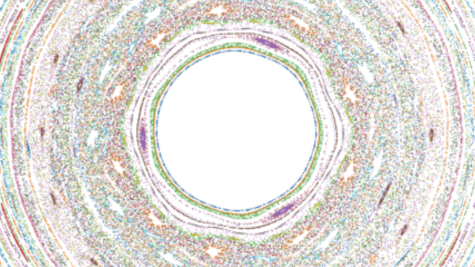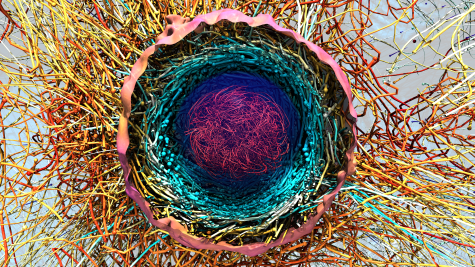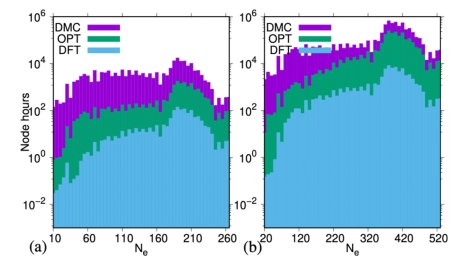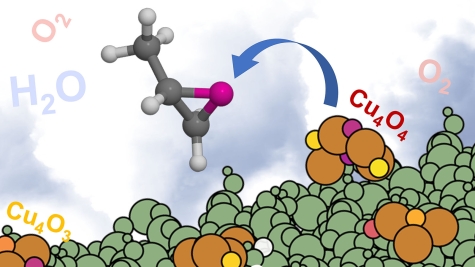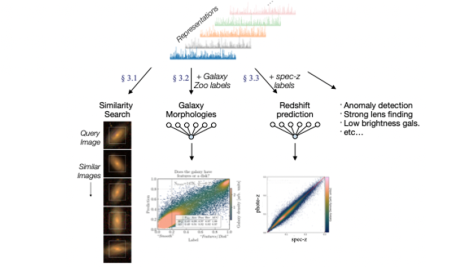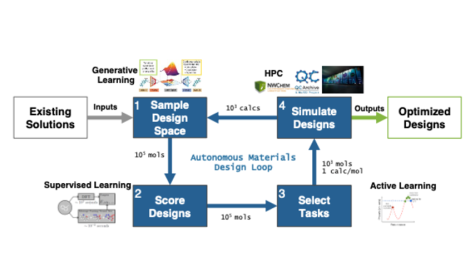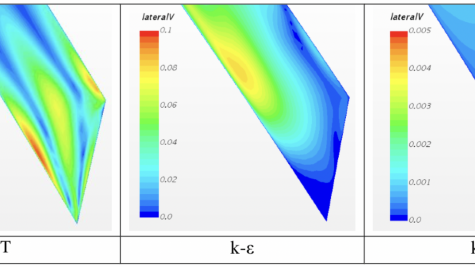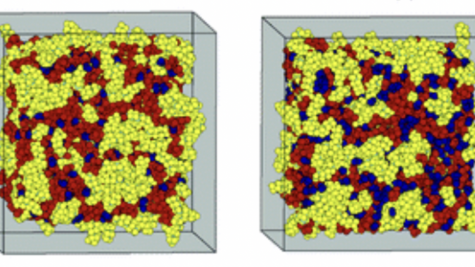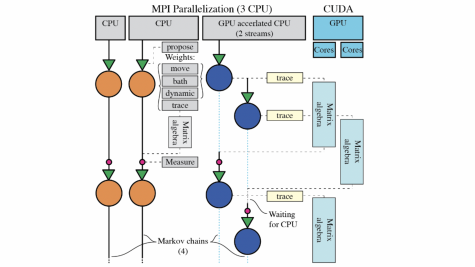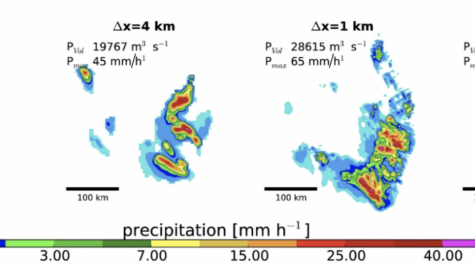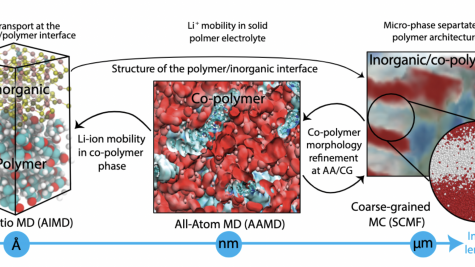ALCF projects cover many scientific disciplines, ranging from biology and physics to materials science and energy technologies. Filter ongoing and past projects by allocation program, scientific domain, and year.
COMPBIO2: COMbining deep-learning with Physics-Based affinIty estimatiOn 2
Coupling machine learning and physics-based methods, with this work researchers aim to accelerate the slow process of drug discovery, which typically lasts many years and costs billions of dollars—a major weakness in public health emergencies.
First-Principles Simulations of Black Hole Accretion Flows and Coronae
With this INCITE project, researchers will study how magnetized plasma turbulence and magnetic reconnection — two of the most fundamental and ubiquitous plasma processes, which were historically studied separately, but have recently been shown to be inevitably interconnected — lead to heating and particle acceleration in the accretion flows feeding massive black holes.
High-Fidelity Gyrokinetic Simulation of Tokamak and ITER Edge Physics
This INCITE project uses use the gyrokinetic particle-in-cell code XGC to study the fundamental edge physics issues critical to the success of ITER and the magnetic fusion energy programs.
Next-Generation 3D Core-Collapse Supernova
With this new INCITE project, this team will conduct not only a full suite of 3D simulations for the spectrum of progenitor stars, but carry out these simulations for approximately five times the physical time possible with previous INCITE allocations all the way to the asymptotic state.
Nuclear Matter Dynamics in Real Time and the Heaviest Elements in Nature
This INCITE project is using the full quantum mechanical predictive tools needed to quantitatively describe nuclear fission, collisions of heavy ions, and fusion—including the total kinetic energy released, the properties and excitation energies of the fission fragments, their masses, charges, excitation energies, angular momenta, the spectra of emitted neutrons, the multinucleon, and the energy transfer in low and medium energy heavy-ion collisions.
Implementing a Dispersive Interaction Database through Quantum Monte Carlo
This project aims to create a new database of non-covalent interactions, in and out of equilibrium with a combination of density functional theory (DFT) with many-body-dispersion method (DFT+MBD) and the diffusion Monte Carlo (DMC) method.
Heterogeneous Catalysis as a Collective Phenomenon Within Dynamic Ensembles of States
The basis of this INCITE project is the realization that a catalytic interface in the steady state is in constant motion enabled by the reaction conditions (temperature and pressure of gases in thermal catalysis, or electrochemical potential, solvent and pH in electrocatalysis).
Dynamic Compressed Sensing for Real-Time Tomographic Reconstruction
To overcome experimental limitations and improve image quality in materials characterization research, researchers are leveraging recent advancements in tomographic reconstruction algorithms, such as compressed sensing methods, to provide superior 3D resolution.
Learning Optimal Image Representations for Current and Future Sky Surveys
With this ADSP project, the team will use their recently developed self-supervised learning framework to extract meaningful representations from galaxy images in the Dark Energy Camera Legacy Survey dataset, providing a scalable data-driven approach capable of learning from unlabeled data.
Machine Learning for Data Reconstruction to Accelerate Physics Discoveries in Accelerator-Based Neutrino Oscillation Experiments
This project makes a significant impact on the SBN and DUNE experiments through providing a common, scalable data reconstruction chain on a HPC system.
Autonomous Molecular Design for Redox Flow Batteries
The goal of this project is to build an autonomous AI application for supercomputers that can select and perform the simulation and machine learning tasks needed to identify better-performing molecules.
High-Fidelity Simulation of Flow and Heat Transfer Behavior to Support Conversion of Research Reactors with Involute-Shaped Fuel Elements to Low Enriched Uranium
In this project, the team will carry out high-fidelity simulations of flow behavior and heat transfer mechanisms support the conversion of research nuclear reactors with involute-shaped fuel elements to low-enriched uranium.
LBNF - PIP-II Optimization Studies for Megawatt 120-GeV Beams on Target
This international project represents a convergence of a substantial fraction of the worldwide neutrino physics community, provided by the large investment by the Department of Energy (DOE). The primary scientific objectives of DUNE are to carry out a comprehensive investigation of neutrino oscillations to test charge and parity (CP) violation in the lepton sector, determine the ordering of the neutrino masses, and to test the three-neutrino paradigm (electron, muon and tau neutrino).
Multiscale Bubble Breakup and Gas Transfer in Turbulent Oceanic Environments
This project aims to resolve these issues by deploying in-house tools, solvers, and techniques that will readily leverage the capabilities of DOE supercomputing systems to obtain novel statistics and insights into the sub-Hinze-scale bubble population and accompanying gas dissolution.
Microscopic Insight into Transport Properties of Li-Battery Electrolytes
This research is aimed at using large-scale, high-performance computing to assist discovery of novel battery electrolytes. The overall goal is to enable rational design of superior electrolytes for high voltage batteries. This study will focus on nontraditional electrolyte discovery from ionic liquids: a new entry to battery electrolytes.
Response Functions of LaNiO2: Insights into High-Temperature Superconductivity
In this project, the researchers will leverage these advances in order to compute the response functions in an important class of superconducting materials: the nickelates. In particular, they will compute the response functions in superconducting LaNiO2 across a range of temperatures and electron concentrations. These response functions and their structure in this parameter space will be analyzed in order to gain fundamental insight into unconventional superconductivity.
Multi-Scale Multi-Physics Ensemble Simulations for Aerosol-Cloud Interactions
This research fulfills the vision of Department of Energy Office of Biological and Environmental Research (BER) Earth and Environmental Systems Science Division (EESSD) to “develop an improved capability for Earth system prediction on seasonal to multidecadal time scales” and addresses EESSD’s three Scientific Grand Challenges: the Integrated Water Cycle, Drivers and Responses in the Earth System, and DataModel Integration.
Improving the Representation of Mesoscale Convective Systems in Weather and Climate
This project is tackling this challenge by using unique MCS observations from the Department of Energy’s (DOE’s) Atmospheric Radiation Measurement (ARM) sites in the U.S. central Great Plains and the Amazon rain forest to evaluate the simulation of MCSs in state-of-the-art atmospheric models.
Modeling of Polymeric Materials for Energy Storage Across Scales
This project uses a multi-scale simulation approach to gain insights into the morphology of two distinct interfaces (polymer/inorganic and polymer/polymer interfaces) of solid polymer electrolytes, and their influence on overall ion conductivity. An important aspect of the project will be to develop new methods and augment software tools that will enable simulation of multiscale materials design problems, and which will be disseminate throughout the scientific and engineering communities.
Quantum Monte Carlo Calculations of Nuclei Up to 16O and Neutron Matter
The overall goal of this research is to accurately describe atomic nuclei (including their spectra, densities, structure functions, transitions, low-energy scattering, and responses) while simultaneously predicting the equation of state of neutron matter.


